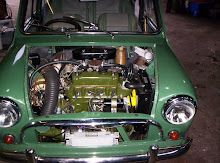Pre-war instruction manuals and motorists' handbooks devoted a good deal of space to the subject of decarbonizing and "top-overhauls." It was not unusual for a manufacturer to recommend that the cylinder head should be removed at intervals of, say, 5,000 or 7,000 miles, to allow carbon deposits to be cleaned from the combustion chambers and piston crowns, and that during every second decarbonization it might be a good plan to remove the valves for examination and grinding-in to restore a gas-tight seal.
Nowadays, however, the subject is seldom dealt with in manufacturers* handbooks, the usual recommendation being that this work should be left to an appointed dealer or agent. Admittedly there is some justification for this; modern engine oils and fuels deposit only negligible amounts of carbon in the combustion chambers and on a modern small, highly-stressed engine, it is the valves that have become the determining factor particularly the exhaust valves, which often need refacing or replace¬ment after a life of about 15,000-20,000 miles. This work can be done most efficiently by using modern valve and valve-seating reconditioning equipment.
This does not mean, however, that a practical owner can no longer tackle the work himself. Where expert assistance is required, it is a simple matter to take the parts to the local B.L.M.C. dealer for reconditioning.
Saturday, 17 October 2009
TOP-OVERHAULS
Posted by Info Mini Cars at 01:22
Subscribe to:
Post Comments (Atom)


0 comments:
Post a Comment